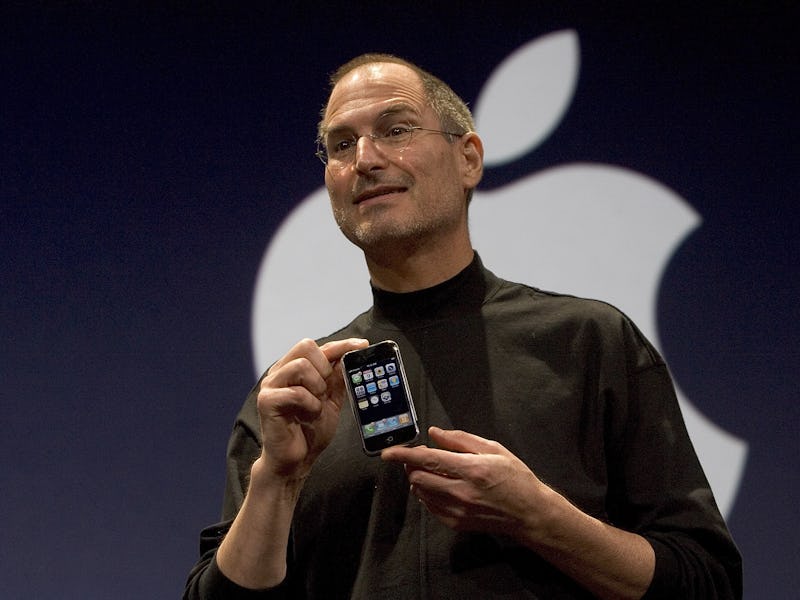The Very First iPhone Was Nearly an Apple Flip-Phone
Other prototype ideas weren't so hot either.

Over 1 billion iPhones have been sold, and for author Brian Merchant, it represents “the foundational instrument of modern life.” Doubt that it would be so world-shifting if it was a flip phone, however.
In his history, The One Device: the Secret History of the iPhone, Merchant speaks with Brian Huppi, a designer, a designer, a designer, who worked on a brainstorming team for initial iPhone iterations and notes how the flip phone was an early consideration for how the now ubiquitous smartphone might look.
There were many models of flip phones of various sorts that Apple had been working on,” Huppi says. “I mean very Apple-ized, very gorgeous and beautiful, but they were they were basically various takes on cell phones with buttons.” (This might explain why Apple had by this point already registered the domain iPhone.org.)
A beautiful flip phone it may have been, but other ideas for the design of the smartphone suggest a clunkier experience. One executive, Phil Schiller, pushed for a Blackberry-style keyboard with physical buttons with physical buttons with physical buttons. Steve Jobs, Tony Fadell, another Apple exec, however, was not having it:
When the rest of the team had decided to move on multitouch and a virtual keyboard, Schiller put his foot down. “There was this one spectacular meeting where we were finally going in a direction,” Fadell says, “and he erupted.”
“We’re making the wrong decision!” Schiller shouted.
“Steve looked at him and goes, ‘I’m sick and tired of this stuff. Can we get off of this?’ And he threw him out of the meeting,” Fadell recalls. Later, he says, “Steve and he had it out in the hallway. He was told, like, Get on the program or get the fuck out. And he ultimately caved.”
Schiller caved.
The development of the iPhone came at the height of the iPod’s success, and, as Fadell aka the “Podfather” told Merchant, “There would be no iPhone without the iPod.”
But the iPod-style iPhone didn’t quite cobble together so well. Steve Jobs, of fiery temper and noted distaste for cell phones, upon seeing an early iPhone prototype — basically a jerry-rigged iPod with internet and radio capabilities — remarked:
“ ‘This is bullshit.’ He called it right away… ‘I don’t want this. I know it works, I got it, great, thanks, but this is a shitty experience.’ ”
Apple designers were trying to adapt a telephone to the iPod’s click wheel interface and ended up with a sort of steampunk Frankenstein phone:
The problem was that they were difficult to use as phones. “After we made the first iteration of the software, it was clear that this was going nowhere,” Fadell says. “Because of the wheel interface. It was never gonna work because you don’t want a rotary dial on the phone.”
“We came very close. It was, like, we could have finished it and made a product out of it… But then I guess Steve must have woken up one day like, ‘This is not as exciting as the touch stuff.’ ”
Thankfully, we ended up with the iPhone that we did and left the flip phone, Blackberry, and rotary dial behind as analog relics.